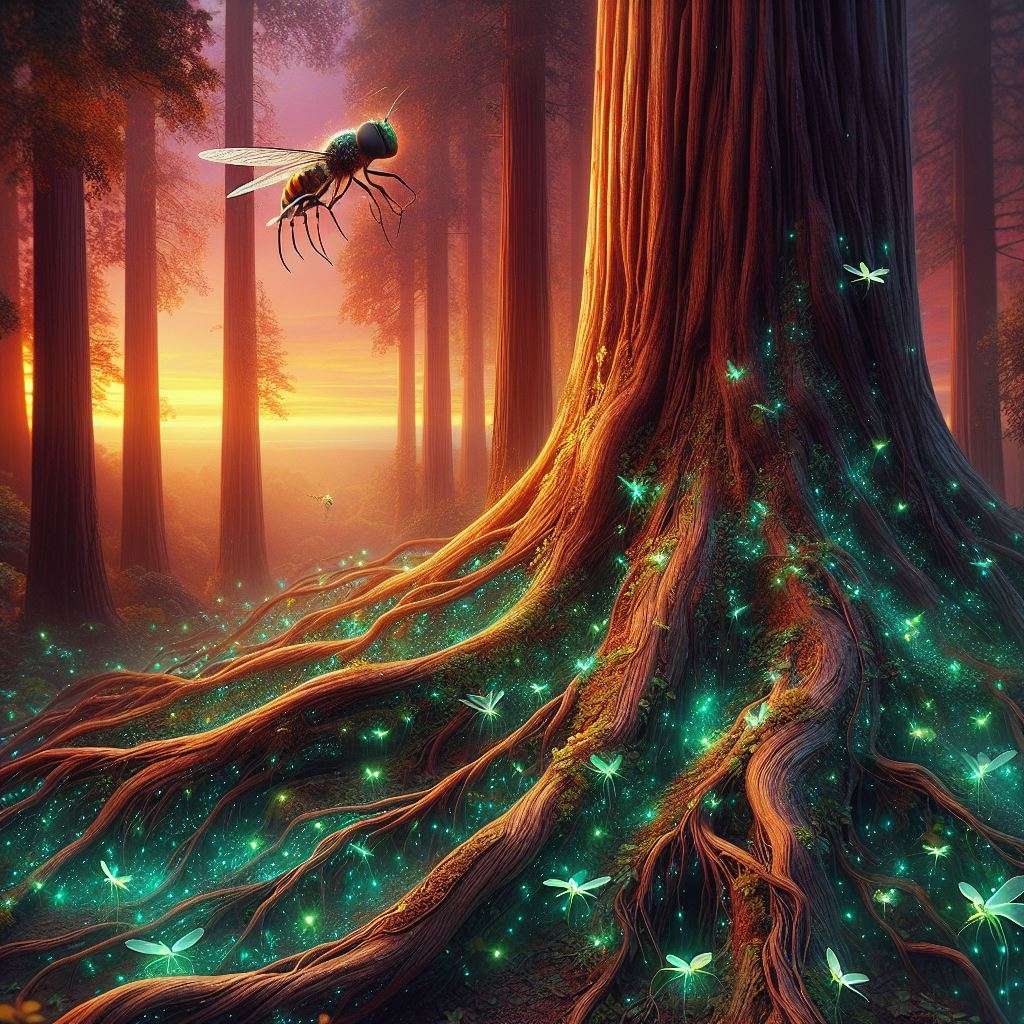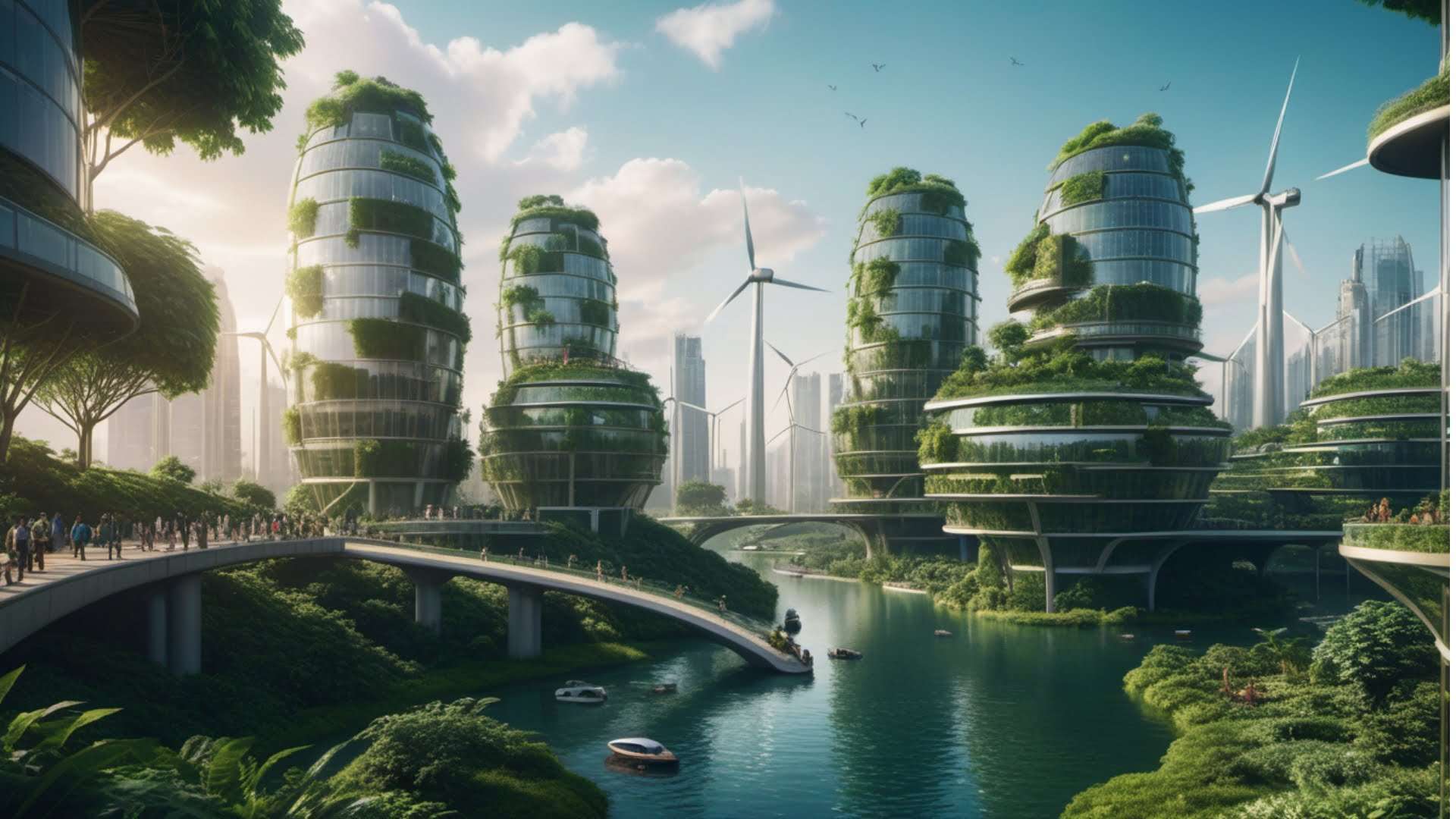Introduction

Imagine a world where nature and AI coexist harmoniously: towering redwoods conversing with drones, bioluminescent plants illuminating data streams, sustainable cities blossoming amidst verdant landscapes. This is not a fantasy, but a possible future where AI and nature collaborate to preserve the environment and enhance human well-being. In this article, we will explore how AI and nature can create a symphony of environmental sustainability, where each element plays a vital role in the orchestrated dance for the planet’s health.
The challenges facing our environment are immense and urgent: climate change, biodiversity loss, pollution, resource depletion, and more. These problems require innovative and scalable solutions that can address the complexity and interdependence of natural systems. AI, as a powerful and versatile technology, can offer such solutions. AI can help us understand, monitor, and manage the environment in ways that are beyond human capabilities. AI can also learn from nature, drawing inspiration from its intelligence and resilience, to create more efficient and adaptive algorithms and applications. AI can be a beacon of hope for the environment, but only if we use it wisely and ethically.
Nature’s Song
Nature is not a passive or static entity, but a dynamic and intelligent system that has evolved over billions of years. Nature is composed of ecosystems, which are complex networks of living and non-living components that interact and exchange energy and matter. Ecosystems are self-organizing, self-regulating, and self-healing, capable of adapting to changing conditions and maintaining stability and diversity. Ecosystems provide essential services for human survival and well-being, such as food, water, air, climate regulation, pollination, and more.

Nature is also a source of inspiration and innovation for AI. Many AI techniques are based on nature’s principles and processes, such as biomimicry, swarm intelligence, and evolutionary algorithms. Biomimicry is the imitation of nature’s designs and strategies to solve human problems. For example, neural networks, a core component of AI, are modeled after the structure and function of biological neurons. Swarm intelligence is the collective behavior of decentralized and self-organized systems, such as ants, bees, and birds. Swarm intelligence can be applied to AI to create distributed and robust systems that can solve complex problems. Evolutionary algorithms are optimization methods that mimic the process of natural selection and variation. Evolutionary algorithms can be used to generate novel and diverse solutions for AI problems.
AI can also contribute to nature’s conservation and restoration, by providing tools and applications that can enhance environmental monitoring, resource management, and disaster mitigation. Some examples are:
- Predictive models for weather patterns and natural disasters. AI can analyze large and diverse datasets, such as satellite imagery, sensor data, and historical records, to create accurate and timely forecasts of weather events and natural hazards, such as floods, droughts, wildfires, and earthquakes. These forecasts can help improve preparedness and response, and reduce the risk and impact of disasters.
- AI-powered drones monitoring deforestation and poaching. AI can enable drones to autonomously fly over forests and wildlife habitats, and detect signs of illegal logging and hunting, such as tree cover loss, animal tracks, and gunshots. These drones can also collect and transmit data on biodiversity and ecosystem health, and alert authorities and conservationists of any threats or anomalies.
- Smart sensors optimizing water and energy usage. AI can integrate and optimize data from smart sensors, such as smart meters, thermostats, and irrigation systems, to reduce water and energy consumption and waste, and increase efficiency and savings. AI can also help balance the supply and demand of renewable energy sources, such as solar and wind, and create smart grids that can distribute and store energy more effectively and reliably.
Silicon’s Whisper
AI is not only a product of nature’s inspiration, but also a force of nature’s transformation. AI has the potential to revolutionize environmental action, by providing data analysis, machine learning, and predictive capabilities that can offer insights and solutions beyond human limitations. AI can help us discover new patterns and relationships, identify and prioritize problems and opportunities, and design and implement interventions and policies that can have a positive impact on the environment and society.
AI has already made significant advancements in shaping environmental action, such as:
- AI-driven renewable energy systems and smart grids. AI can help increase the production and integration of renewable energy sources, such as solar and wind, by forecasting and optimizing their output and performance, and by detecting and correcting faults and inefficiencies. AI can also help create smart grids that can manage and distribute energy more effectively and reliably, and respond to changes in demand and supply in real time.
- Precision agriculture techniques optimize crop yields and minimize environmental impact. AI can help improve agricultural productivity and sustainability, by providing data-driven and customized solutions for crop management, such as soil and water monitoring, pest and disease detection and control, fertilizer and pesticide optimization, and harvesting and post-harvesting optimization. AI can also help reduce the environmental impact of agriculture, by minimizing water and chemical use, and by enhancing soil health and biodiversity.
- AI-powered robots assist in conservation efforts and pollution cleanup. AI can enable robots to perform tasks that are difficult, dangerous, or tedious for humans, such as planting trees, collecting trash, removing invasive species, and restoring coral reefs. AI can also equip robots with the ability to learn from their environment interact with other agents, such as humans, animals, and plants, and cooperate and coordinate with each other to achieve common goals.
The Orchestrated Symphony
AI and nature can create a symphony of environmental sustainability, where each element plays a vital role in the orchestrated dance for the planet’s health. However, this symphony is not a solo performance, but a collaborative effort that requires the participation and contribution of humans. Humans are the creators and users of AI, and the stewards and beneficiaries of nature. Humans have the responsibility and the opportunity to ensure that AI and nature work together in harmony, and not in conflict or competition.
To achieve this harmony, humans need to consider the ethical implications of AI deployment in environmental contexts, such as:
- Transparency: AI systems should be transparent and explainable so that humans can understand how they work, what data they use, and what outcomes they produce. Transparency can help build trust and accountability, and prevent misuse and abuse of AI.
- Bias mitigation: AI systems should be fair and inclusive, and avoid or correct any biases or discrimination that may arise from their data, algorithms, or applications. Bias mitigation can help ensure that AI respects and protects the rights and interests of all stakeholders, and does not exacerbate existing inequalities or injustices.
- Equitable access: AI systems should be accessible and affordable, and not create or widen any gaps or barriers between different groups or regions. Equitable access can help ensure that AI benefits everyone, and does not create or reinforce any digital or environmental divides.
Humans also need to showcase and celebrate the successful examples of human-AI partnerships for environmental sustainability, such as:
- Citizen science initiatives powered by AI platforms. Citizen science is the involvement of the public in scientific research and discovery, often through the collection and analysis of data. AI can enhance citizen science by providing platforms and tools that can facilitate and automate data collection, processing, and visualization, and by providing feedback and guidance to the participants. Citizen science can empower and engage people in environmental issues, and generate valuable and diverse data and knowledge for environmental action.
- Joint ventures between tech companies and conservation organizations. Tech companies and conservation organizations can form partnerships that can leverage their respective strengths and resources, and create synergies and innovations for environmental sustainability. Tech companies can provide cutting-edge AI technologies and expertise, and conservation organizations can provide domain knowledge and experience, and access to relevant data and networks. These partnerships can create and implement effective and scalable solutions for environmental challenges, and create positive social and environmental impact.
Conclusion
AI and nature can create a symphony of environmental sustainability, where each element plays a vital role in the orchestrated dance for the planet’s health. This symphony is not a fantasy, but a possible future where AI and nature collaborate to preserve the environment and enhance human well-being. However, this future is not inevitable, but dependent on our choices and actions. We have the responsibility and the opportunity to ensure that AI and nature work together in harmony, and not in conflict or competition. We have the potential and the power to create a sustainable symphony, where AI acts as a conductor, harmonizing with nature’s melody. To achieve this vision, we need to embrace AI’s potential, foster collaboration, and ensure ethical use of technology for the benefit of planet and people.
